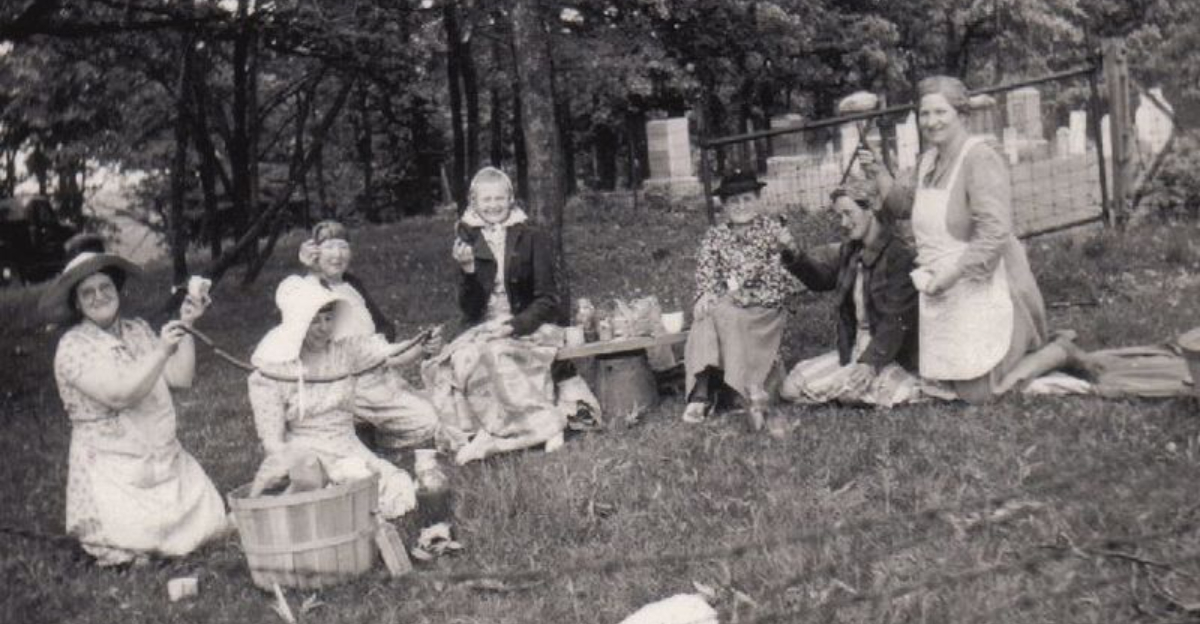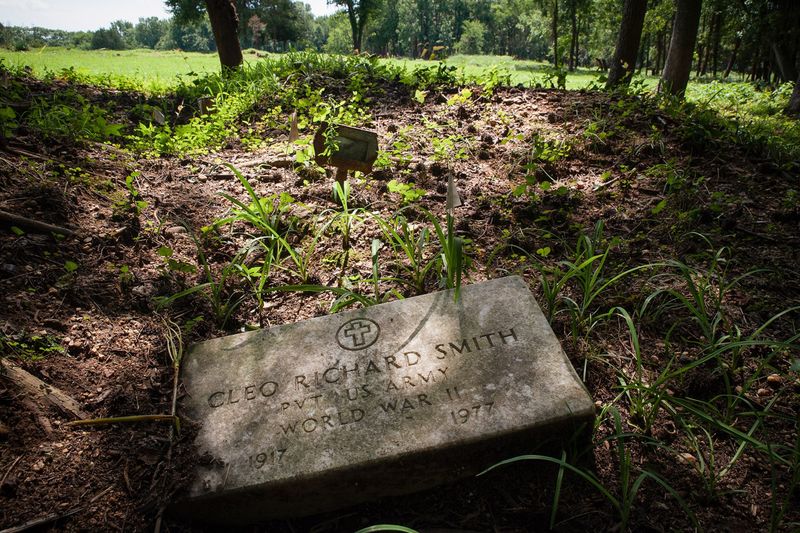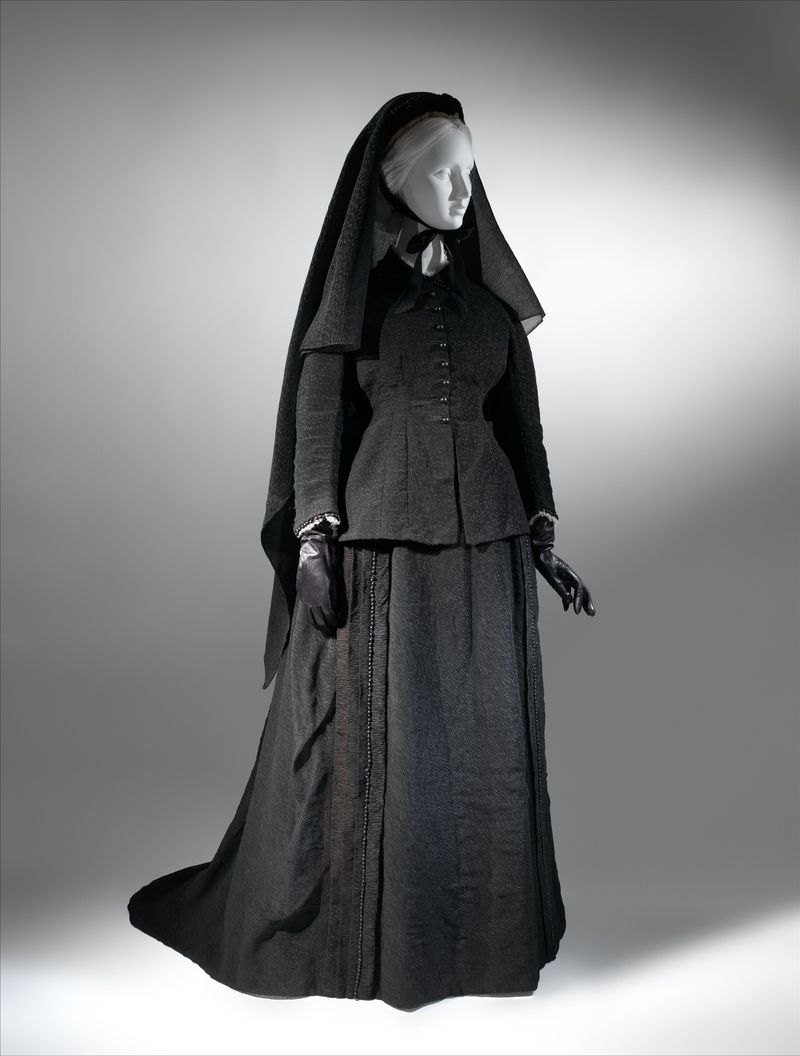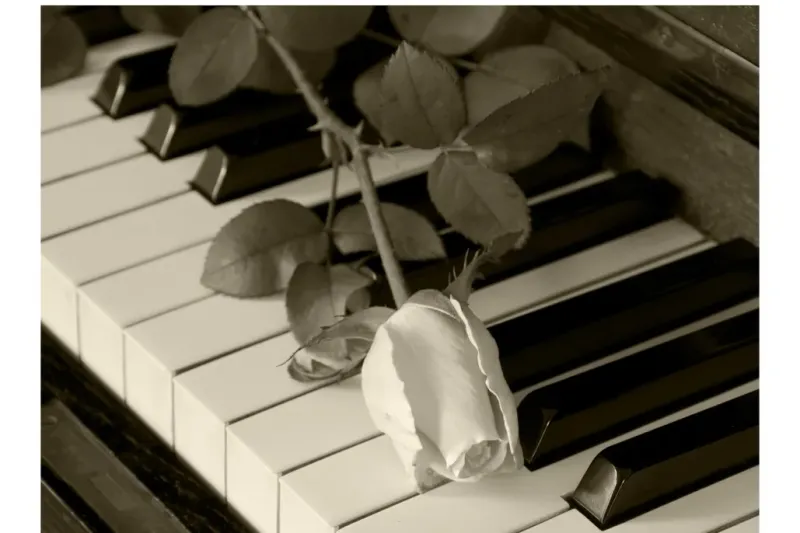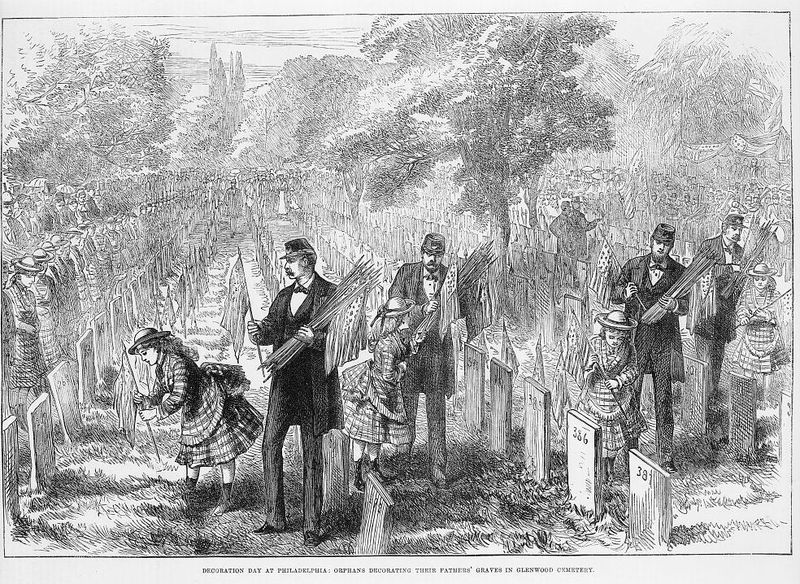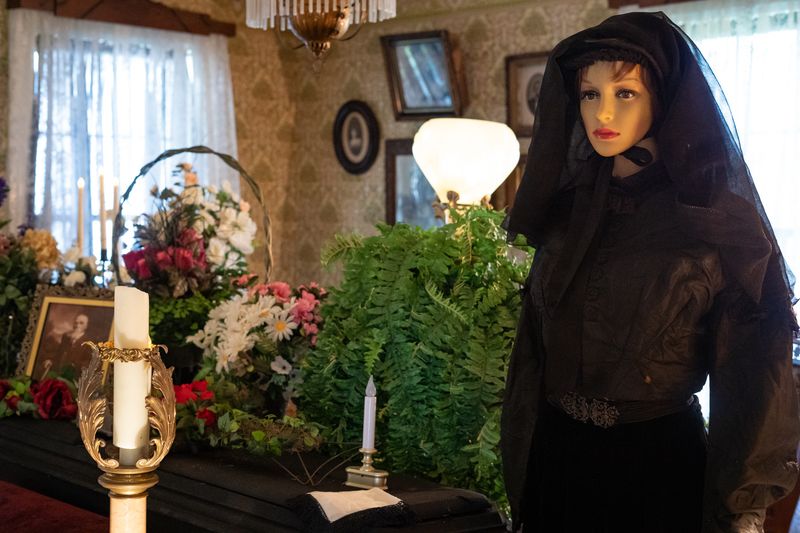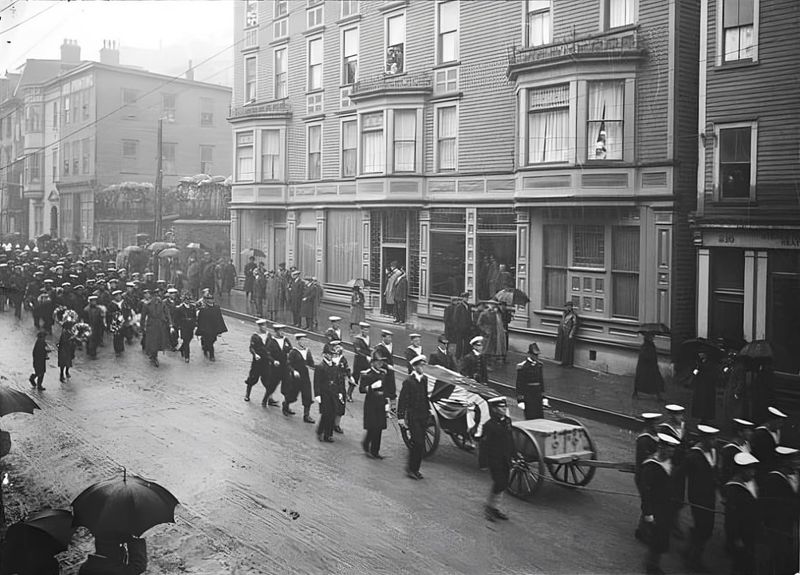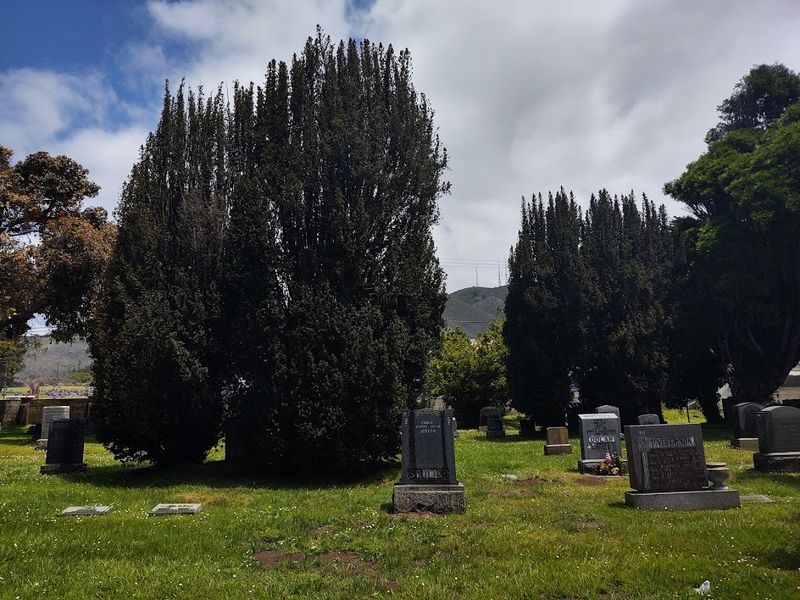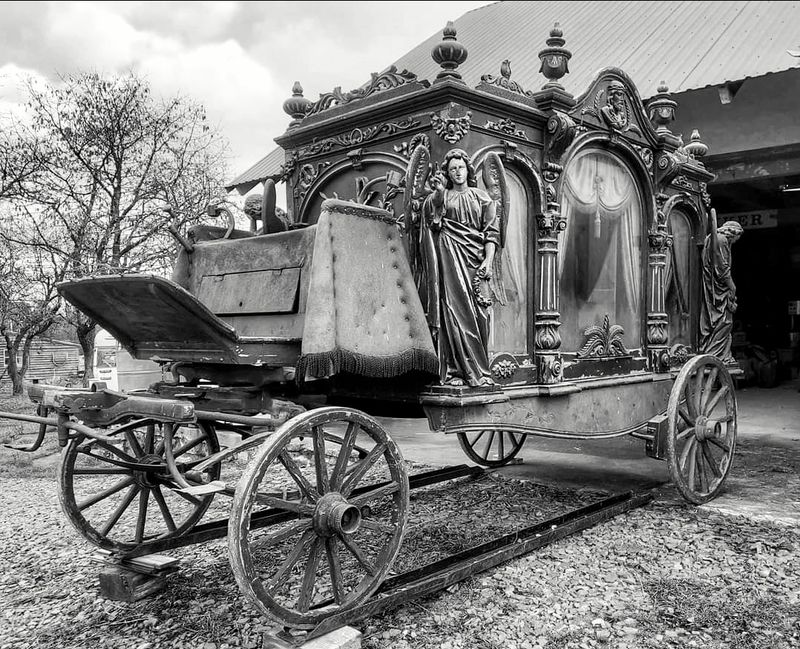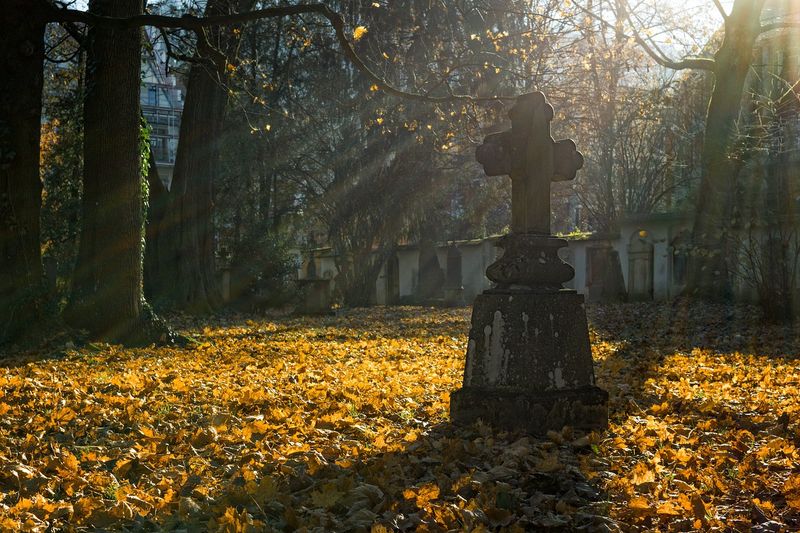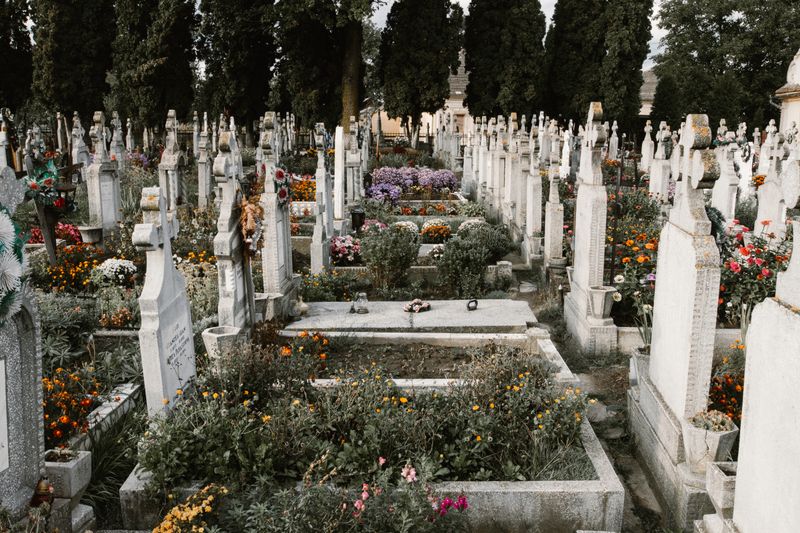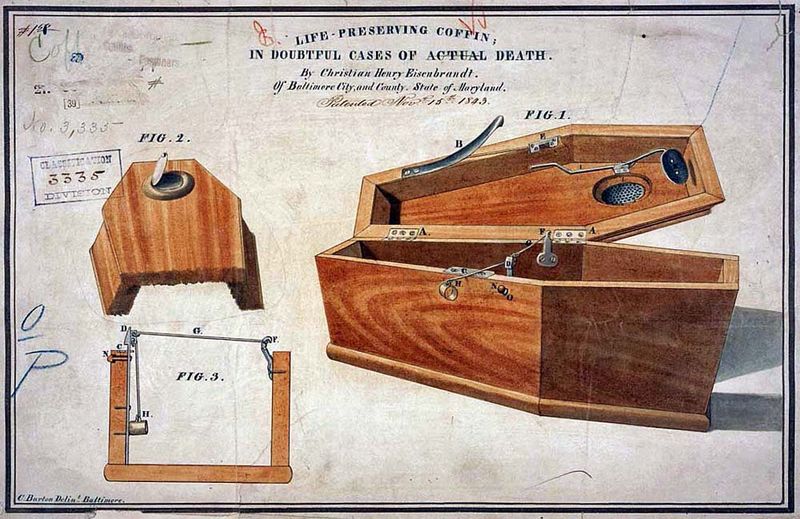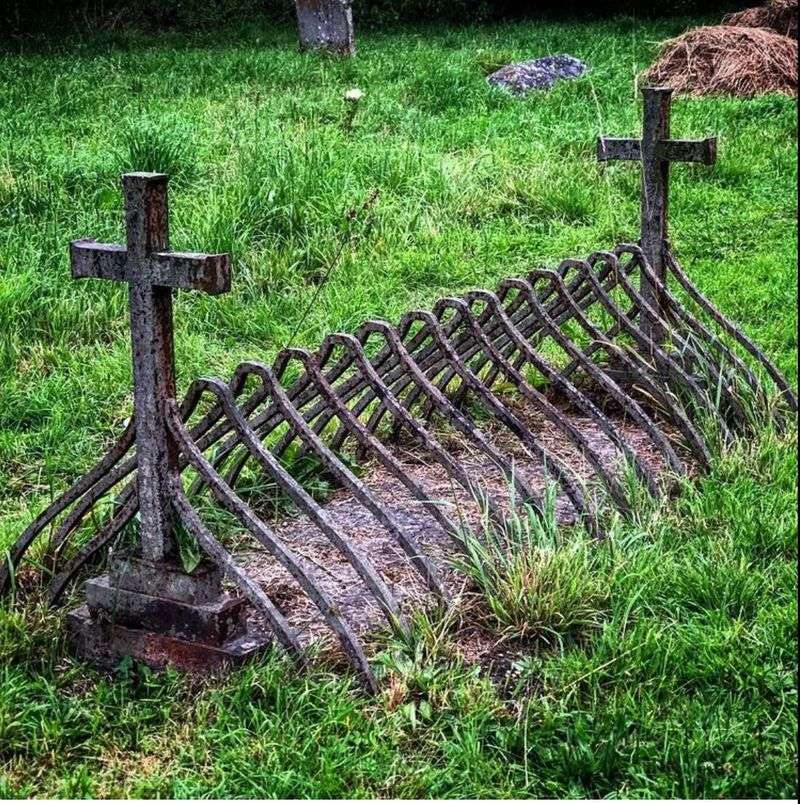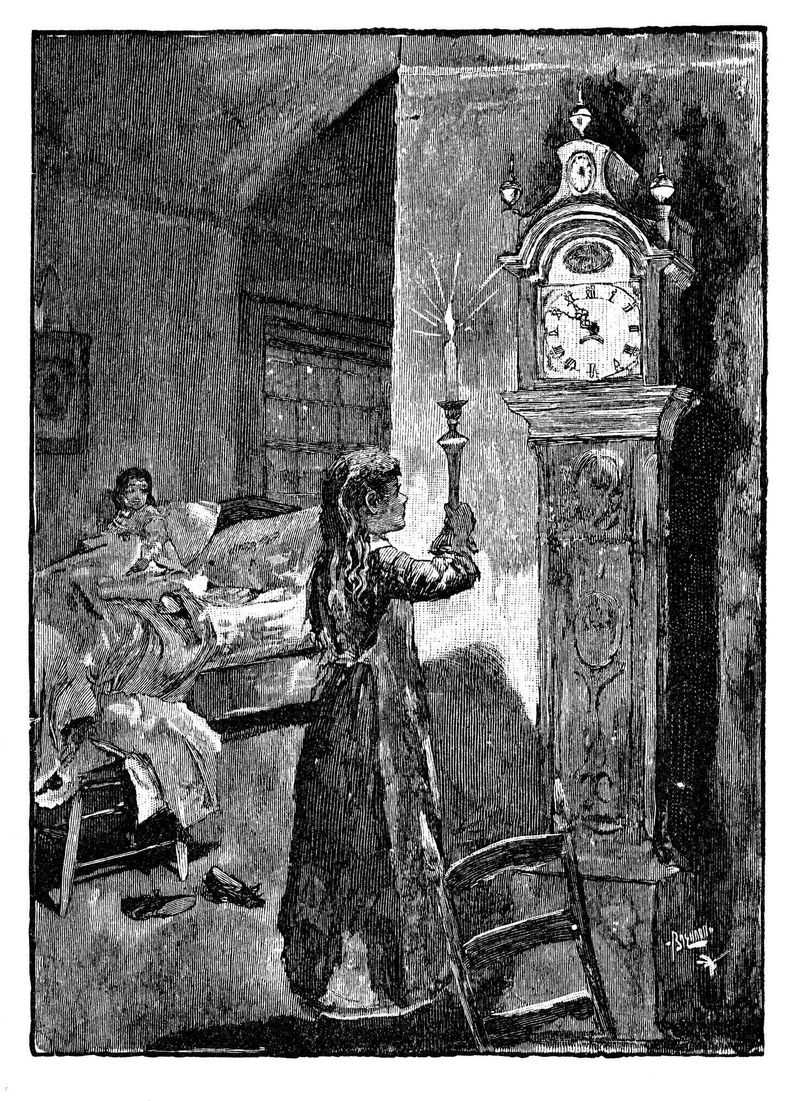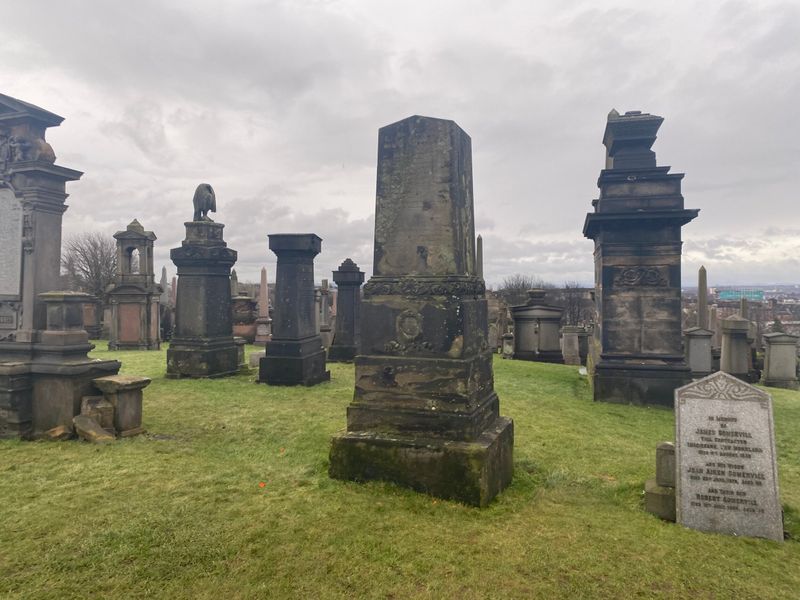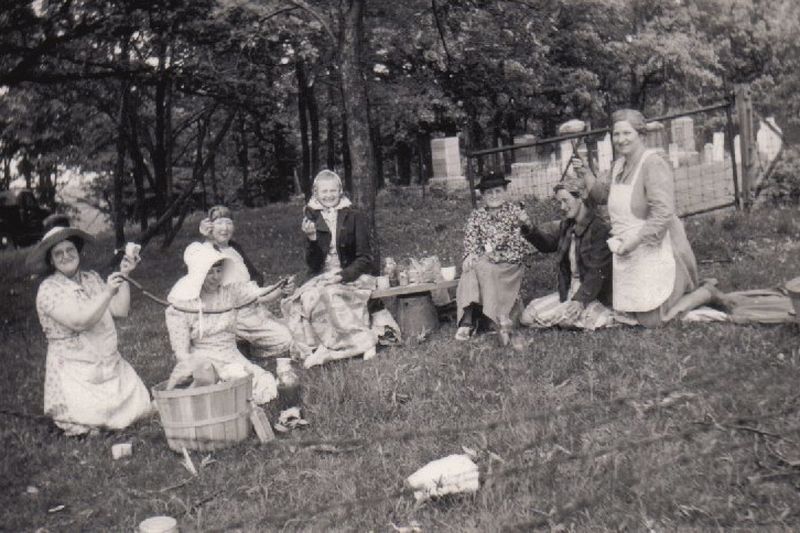American cemeteries weren’t just places to bury the dead – they were governed by strict rules shaped by deep-seated fears and superstitions.
Our ancestors believed the boundary between the living and dead was thin, requiring careful protocols to prevent spiritual interference.
These forgotten cemetery customs tell us much about how earlier Americans viewed death, and the invisible dangers they believed lurked among the tombstones.
1. Never Take Anything Home
Stones, flowers, or trinkets found in cemeteries were strictly off-limits to visitors. Our ancestors believed these objects could serve as spiritual anchors, allowing restless souls to attach themselves and follow you home. Even innocent-looking items like pebbles were thought to be potential vessels for otherworldly hitchhikers.
Rural communities especially enforced this rule, with tales circulating about homes becoming haunted after graveyard souvenirs were brought inside. Children were taught this prohibition early, often through frightening stories about the consequences of such theft.
The fear wasn’t just about ghosts—it represented deeper anxieties about maintaining proper boundaries between the realms of the living and the dead.
2. Widow’s Strict Mourning Attire
Following a husband’s death, a widow entered a rigid mourning period lasting up to two years. During the first year—called ‘deep mourning’—she wore only black clothing made from dull, non-reflective materials like crepe. Even her jewelry was restricted to jet, a black fossilized wood.
These dress codes weren’t mere suggestions. Communities closely monitored grieving women, and those who abandoned mourning clothes too early faced harsh social judgment and whispers about disrespect toward their husbands. Some believed premature shedding of mourning attire might even prevent the deceased’s soul from resting properly.
The rules gradually relaxed during the second year, allowing subtle touches of purple, gray, or white as the widow transitioned back to normal life.
3. Sacred Songs Only
Cemetery gatherings permitted only hymns and religious music. Popular tunes or folk songs were considered deeply inappropriate and potentially dangerous. The belief was that secular music might confuse departing souls or—worse—attract malevolent spirits drawn to expressions of earthly pleasure.
Funeral directors and religious leaders carefully vetted musical selections before services. Families sometimes received stern warnings if their musical choices strayed from accepted sacred repertoires. Many rural communities maintained special funeral hymnals containing only songs deemed appropriate for cemetery use.
This musical restriction reflected broader American anxieties about maintaining proper spiritual boundaries and showing proper reverence in death’s presence. The practice continued well into the early 20th century before gradually relaxing.
4. Exit Backwards Only
After paying respects at a grave, mourners carefully backed away rather than turning their backs on the deceased. This peculiar custom stemmed from the fear that turning away might offend the spirit or, worse, create an opening for it to follow you home. The practice was especially common in rural communities and Appalachian regions.
Children were taught this rule from their first cemetery visits, often with whispered warnings about the consequences of forgetting. Some families enhanced the ritual by keeping their eyes downcast while retreating, avoiding even accidental eye contact with any lingering spirits.
This backward exit represented the delicate negotiation Americans believed necessary when visiting the threshold between worlds—showing respect while maintaining safe separation from the realm of the dead.
5. Covered Mirrors Prevent Soul Trapping
When death visited a household, one of the first actions was draping all mirrors with black cloth. This wasn’t mere symbolism—many genuinely feared that mirrors could trap the departing soul, preventing its journey to the afterlife. The practice crossed cultural and economic boundaries, observed in humble farmhouses and wealthy urban homes alike.
The mirror-covering typically lasted until the body left the house for burial. Some particularly superstitious families maintained the coverings for weeks afterward, believing the soul might return to visit and face the same mirror-related dangers.
This custom reveals how everyday objects could become sources of supernatural anxiety during death’s presence. Mirrors, with their reflection of reality, seemed to occupy an unsettling middle ground between the physical and spiritual worlds.
6. Feet First Departure Rule
A rigid protocol governed how bodies left the home: always feet first, never head first. This wasn’t about practicality but spiritual safety. Americans believed that carrying the deceased out headfirst might allow their spirit to look back into the home and beckon another family member to follow them into death.
Undertakers took this rule seriously, sometimes refusing to proceed if family members suggested a more convenient route that would violate the feet-first principle. In rural areas where professional undertakers weren’t available, community elders ensured this tradition was strictly followed.
The practice reveals the profound anxiety early Americans felt about death’s contagious nature—as if mortality itself might spread through a household if proper precautions weren’t taken during this critical transition.
7. Symbolic Trees as Spiritual Guards
Cemetery landscaping wasn’t random—specific trees were planted as spiritual sentinels. Evergreens like yew and cypress dominated American graveyards, their year-round foliage symbolizing eternal life while supposedly creating barriers against wandering spirits. Eastern red cedar was particularly favored for its dense growth and aromatic properties.
Weeping willows appeared frequently in older cemeteries, their drooping branches representing the grief of the living. Oak trees symbolized strength and endurance of the soul, while conifers pointed skyward, directing spirits upward toward heaven.
These carefully selected trees formed natural architecture that served both practical and mystical purposes. They provided shade for visitors while creating what many believed was a protective boundary between the realms of the living and the dead.
8. Hold Your Breath While Passing
Travelers passing cemeteries often held their breath until they were safely beyond the graveyard’s boundaries. This wasn’t merely childhood superstition but a practice many adults observed privately. The belief was that breathing near burial grounds might draw in wandering spirits or the contagion of death itself.
Wagon drivers would sometimes whip horses to increase speed when passing graveyards, especially after dark. Parents warned children about this precaution, creating generations who instinctively held their breath when cemetery walls came into view.
This custom persisted surprisingly late—well into the automobile age—with some rural Americans continuing the practice into the mid-20th century. The tradition reveals how deeply physical and spiritual contamination were linked in the American imagination.
9. No Whistling Among Tombstones
Cemetery visitors observed a strict no-whistling rule, believing the sound could disturb the dead or—worse—summon mischievous spirits. The prohibition was especially strong in Appalachian and Southern communities, where whistling was thought to create vibrations that thinned the veil between worlds.
Parents scolded children caught whistling near graves, often with urgent whispers about the dangers rather than normal disciplinary tones. The fear wasn’t just about waking the dead but potentially attracting their attention to the whistler.
Some communities extended this rule to prohibit all unnecessarily loud noises in cemeteries. The whistling taboo persisted even as other superstitions faded, remaining a common cemetery etiquette rule well into the 20th century.
10. Floral Messages for the Afterlife
Planting flowers on graves wasn’t merely decorative—it was a sophisticated symbolic language. Different blooms conveyed specific messages about the deceased and their afterlife journey. Roses represented love, while lilies symbolized restored innocence of the soul after death.
Families carefully selected plants based on their meanings and the deceased’s character. Perennials were favored over annuals, as their return each spring suggested the soul’s immortality. Some communities believed vibrant blooms indicated the deceased had found peace, while struggling plants might signal a troubled spirit.
This botanical communication reflected Americans’ desire to maintain connections with departed loved ones. Through flowers, the living could continue “speaking” to the dead long after the funeral ended.
11. Safety Bells for the Prematurely Buried
The fear of being buried alive drove Americans to extraordinary precautions. “Safety coffins” featured bells connected to the casket by a string that the mistakenly buried could ring to signal gravediggers. Some cemeteries employed “watching men” who listened for bell signals during the days following a burial.
Families sometimes requested burial delays of several days to ensure death was genuine. Newspaper accounts of near-miss burials fueled this anxiety, with stories of coffins later found containing bodies with scratched lids or contorted in apparent struggles.
This fear reflected the limitations of 19th-century medical knowledge, when distinguishing deep comas from death was challenging. The terror of conscious burial persisted as one of America’s most profound death-related anxieties.
12. Guards Against Body Snatchers
Cemetery security became a serious concern as medical schools’ demand for cadavers fueled a grim underground trade. Grave robbers—euphemistically called “resurrection men”—targeted fresh burials, leading families to take extraordinary measures to protect their deceased loved ones.
Wealthy families installed heavy stone slabs or metal cages called “mortsafes” over new graves. Some communities built dedicated watchtowers where armed guards monitored cemeteries at night. Poorer families sometimes took turns keeping vigil over new graves for weeks.
The fear of body snatching wasn’t just about property rights—many believed proper burial was essential for the soul’s journey. The thought of a loved one ending up on a dissection table caused profound spiritual distress beyond the obvious emotional trauma.
13. Stopped Clocks Mark Death’s Moment
When death occurred in a household, family members immediately stopped all clocks at the exact time of passing. This wasn’t merely symbolic—many believed that stopping timepieces prevented bad luck from falling upon the next person to die in the family. The clocks remained frozen until after the burial was complete.
The practice was especially common in rural communities and continued well into the early 20th century. Some families extended this to covering clock faces with cloth, similar to the mirror-covering tradition.
This custom reflected how death temporarily suspended normal life for the household. Just as the deceased had run out of time, the home itself would temporarily exist outside time’s flow, marking respect for this profound transition.
14. Never Step Directly on Graves
Cemetery visitors carefully navigated pathways between graves, never stepping directly on burial plots. This wasn’t merely about respect—many believed that walking on graves could disturb the dead, potentially triggering haunting or misfortune for the trespasser. The taboo was especially strong regarding children’s graves.
Parents taught children to walk around rather than over graves, often with warnings about the dead reaching up to grab ankles. In some communities, stepping on a grave was thought to cause nightmares featuring the disturbed deceased.
This avoidance practice created natural pathways through older cemeteries, with visible wear patterns between graves rather than across them. The custom persists today, though many modern observers follow it out of respect rather than supernatural fear.
15. Graveside Picnics Connect Families
Victorian Americans maintained relationships with deceased relatives through regular cemetery picnics. Families would spread blankets near family plots, sharing meals “with” their departed members. These weren’t somber occasions but often featured laughter, conversation, and children playing nearby.
Rural cemeteries were designed with this practice in mind, featuring scenic landscaping and benches that encouraged extended visits. Decoration Day (later Memorial Day) formalized this tradition, with communities gathering for daylong cemetery celebrations including food, speeches, and remembrances.
This custom reveals a more integrated relationship with death than modern Americans typically maintain. Rather than avoiding reminders of mortality, our ancestors incorporated cemetery visits into regular family routines, maintaining bonds that transcended the grave.
